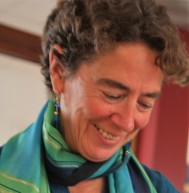Alison Gilchrist
I am currently part of an exciting European Research Area network (ERA-net) funded project, ‘Smart Urban Intermediaries’ with Catherine Durose from INLOGOV, Annika Agger (Roskilde University), Oliver Escobar (University of Edinburgh) and Merlijn van Hulst (University of Tilburg). This transnational co-enquiry project is looking at the role and practices of ‘smart urban intermediaries’; individuals who forge connections between and within communities and formal institutions of urban governance to create social innovation.
We have now selected a dozen people we identify as smart urban intermediaries and “committed over time to making a difference in their neighbourhood, campaigns on a local issue, supports people to act together, works for social change or helps to solve local problems”. We will be working with them and other stakeholders to understand how they operate and how their activities effect regeneration and community initiatives in areas of Birmingham, Glasgow, Copenhagen and Amsterdam. Following discussions with our local cooperation partners, Citizens UK and Birmingham Council, we have chosen to focus the research on Balsall Heath and Sparkbrook.
These two areas combine as one political ward on the edge of inner-city Birmingham and are home to around 10,000 residents drawn from all corners of the world. They have been described as a ‘microcosm’ of the city and are renowned for many reasons. We chose them as our anchor neighbourhood because of their reputation as places with a ‘can-do’ attitude, as well as being characterised by both high concentrations of deprivation and ethnic diversity.
Discussions with our two co-operation partners indicated that Sparkbrook and Balsall Heath are vibrant, with lots going on at community level, while facing a number of serious challenges in terms of poor health, low educational attainment, rundown housing and crime, including terrorism-related incidents.
After a couple of hours searching online for information about the various landmarks and organisations operating in the area, I spent a cold and drizzly afternoon on ‘walkabout’ with my camera, strolling round the streets, observing what was going on and dropping in to some of the local projects I had heard about or just happened to pass.
I also attended the Balsall Heath ‘dynamic youth’ awards evening, which was hugely inspiring for its sense of community pride and I got to meet a few of the local characters who had been mentioned to us as potential ‘intermediaries’ as well as introducing myself to some new community entrepreneurs.
My main impression from these two encounters was of the friendliness of the people I met in those few hours. Nearly everyone I spoke to was positive and helpful and I collected lots of leaflets, photographs and contact details along the way. Many of these have formed the foundation for our first round of fieldwork, both in terms of arranging interviews but also providing points of reference in the conversations.
Our team completed 20 formal introductory interviews to choose the dozen individuals who we will be working with over the next year as our ‘smart urban intermediaries’. We feel we have a pretty good gender balance in the sample, and people from a range of ethnic backgrounds as well as practitioners, professionals and activists occupying different roles in the community.
In our initial reflections on these interviews, we have been struck by the passion people feel for the area – their sense of commitment, pride and rooted-ness, often coming from families who have lived in the area for many years or simply because they love the variety of cultures and community connections that are evident in the shops, the inter-faith activities, the streetscapes and languages heard all around. But no-one is under-estimating the severe problems facing the residents or the agencies that serve them. Some of these are long-standing but have been exacerbated by cuts in public services, lack of sustainable funding for core costs, growing inequalities and loss of social cohesion.
Many of the interviews revealed similar worries about the future as well as tensions between some of the organisations. We are currently underway in setting up the first Living Lab to take place on March 19th and have been pleased at the level of enthusiasm for this opportunity for people to come together to share their experiences, find common interests and to learn together about the practices and conditions that support smart ‘connecting’ for social change and innovation.
 Alison Gilchrist is a post-doctoral research fellow at INLOGOV. Alison has substantial experience of working with communities as a community development worker. Her doctoral research investigated the practices of networking and she has a particular interest in strategies for tackling conflict, discrimination and inequalities. You can read more about the project here.
Alison Gilchrist is a post-doctoral research fellow at INLOGOV. Alison has substantial experience of working with communities as a community development worker. Her doctoral research investigated the practices of networking and she has a particular interest in strategies for tackling conflict, discrimination and inequalities. You can read more about the project here.